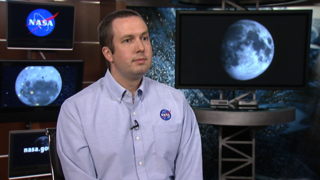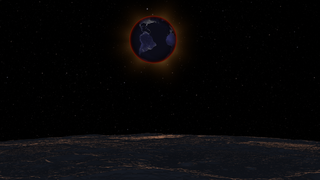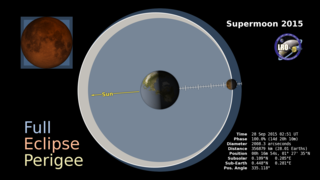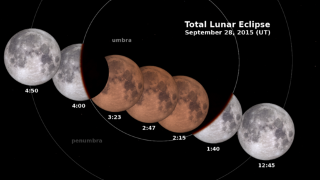LRO and the September 27-28, 2015 Lunar Eclipse: Telescopic View
Dial-A-Moon
UT Hour: Minute: Second:Typically, the Lunar Reconnaissance Orbiter (LRO) spacecraft flies over the night side of the Moon every two hours, spending about 45 minutes in darkness. Because LRO is powered by sunlight, it uses a rechargeable battery to operate while on the night side of the Moon and then charges the battery when it comes back around into daylight.
During the total lunar eclipse of September 27-28, 2015, however, LRO emerges from the night side of the Moon only to find the Sun blocked by the Earth. LRO needs to travel an entire orbit before seeing the Sun again, relying continuously on its battery for almost three hours.
LRO won’t be in any real danger as long as its power consumption is handled carefully. Except for LRO's infrared radiometer, called Diviner, its scientific instruments will be turned off temporarily, while vital subsystems like the heaters will remain on. LRO will be closely monitored throughout the eclipse.
Diviner maps the temperature on the Moon's surface along a swath below LRO's orbit. During the eclipse, the instrument will precisely measure the rapid temperature changes that occur as the Moon enters and leaves the Earth's shadow. When compared with normal daylight variations, these measurements will reveal new details about the top centimeter (half-inch) of lunar regolith. Diviner wasn't specifically designed for this experiment, but as scientists have gained experience with the LRO spacecraft, they've thought of new and creative ways of using its instruments.
This animation shows the Moon as it might look through a telescope on Earth, along with LRO’s orbit, its view of the Sun, and a fuel gauge showing received sunlight and the battery’s charge.
Related
For More Information
Visualization Credits
David Ladd (USRA): Producer
Michelle Handleman (USRA): Producer
John Keller (NASA/GSFC): Scientist
Noah Petro (NASA/GSFC): Scientist
NASA's Scientific Visualization Studio
https://svs.gsfc.nasa.gov/4356
Mission:
LRO (Lunar Reconnaissance Orbiter)
Data Used:
LRO/LOLA/Digital Elevation Map also referred to as: DEM
JPL DE421 also referred to as: DE421
Ephemeris - NASA/JPLLRO/LROC/WAC 643nm High Sun Global Mosaic
MosaicThis item is part of these series:
The Moon
LRO - Animations
Keywords:
SVS >> HDTV
SVS >> Lunar
SVS >> Moon
SVS >> LRO
SVS >> Lunar Reconnaissance Orbiter
SVS >> Eclipse
SVS >> Lunar Eclipse
NASA Science >> Planets and Moons

















